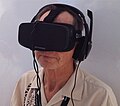Auckland: A unique new three-dimensional virtual supermarket software tool to
measure food purchase behaviour will be able to test the effectiveness
of food-related policy changes. The virtual supermarket is designed to enable experimental studies in
a supermarket setting without the complexity or costs normally
associated with undertaking such research, says it’s creator, Dr Wilma
Waterlander from the University of Auckland’s National Institute for
Health Innovation. “For example, researchers can use it to test the effect of public
health interventions such as a soft drink tax or food labelling, by
exposing only part of a study population to increased soft drink
prices,” she says.
“Researchers can fully control and manipulate various factors such as food prices, food labels, and promotions.”
Dr Waterlander led a validation study to test the virtual supermarket
that was recently published in the international scientific Journal of
Medical Internet Research.
The virtual supermarket simulates a real shopping experience and was
designed using the Auckland branch of a market leading supermarket as a
model. It includes a representative selection of products comparable to
what is normally available in a New Zealand supermarket (totalling
1,445 unique products).
In the recent validation study 123 New Zealand adults completed three
shopping trips in the virtual supermarket during three consecutive
weeks and collected their real life grocery till receipts for that same
period.
“We found that shopping patterns in the virtual supermarket were
comparable to those in real life and that, overall, the virtual
supermarket is a valid tool to measure food purchasing behaviour”, says
Dr Waterlander.
The four food groups ‘fruit and vegetables’, ‘dairy’, ‘meat and fish’
and ‘bread and bakery’ represented the largest purchase amounts both in
the virtual and real supermarket.
“The study revealed some important opportunities to further improve
the software with some important differences between virtual and real
purchases shown for purchases in the food groups ‘fruits and
vegetables’, ‘dairy’ and ‘snack foods’ and the researchers are working
on improving the software for these groups,” says Dr Waterlander.
Some advantages of the research tool also include the ability of
researchers to test interventions without the complexity or cost
normally associated with undertaking such research.
Researchers can also retain their academic independence which is
particularly relevant when testing interventions that might not be
favoured by commercial parties, says Dr Waterlander.
For the study participants, there is also the convenience of
completing the virtual supermarket shopping from the comfort of their
own home.
